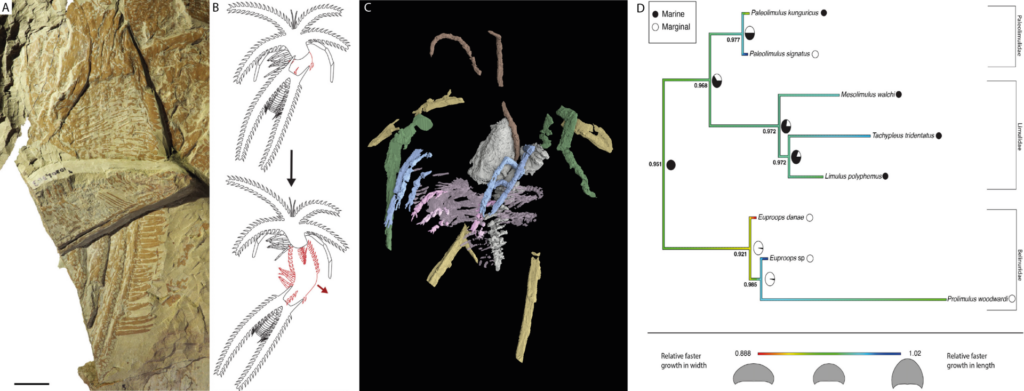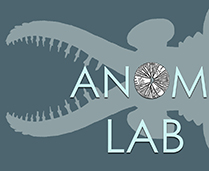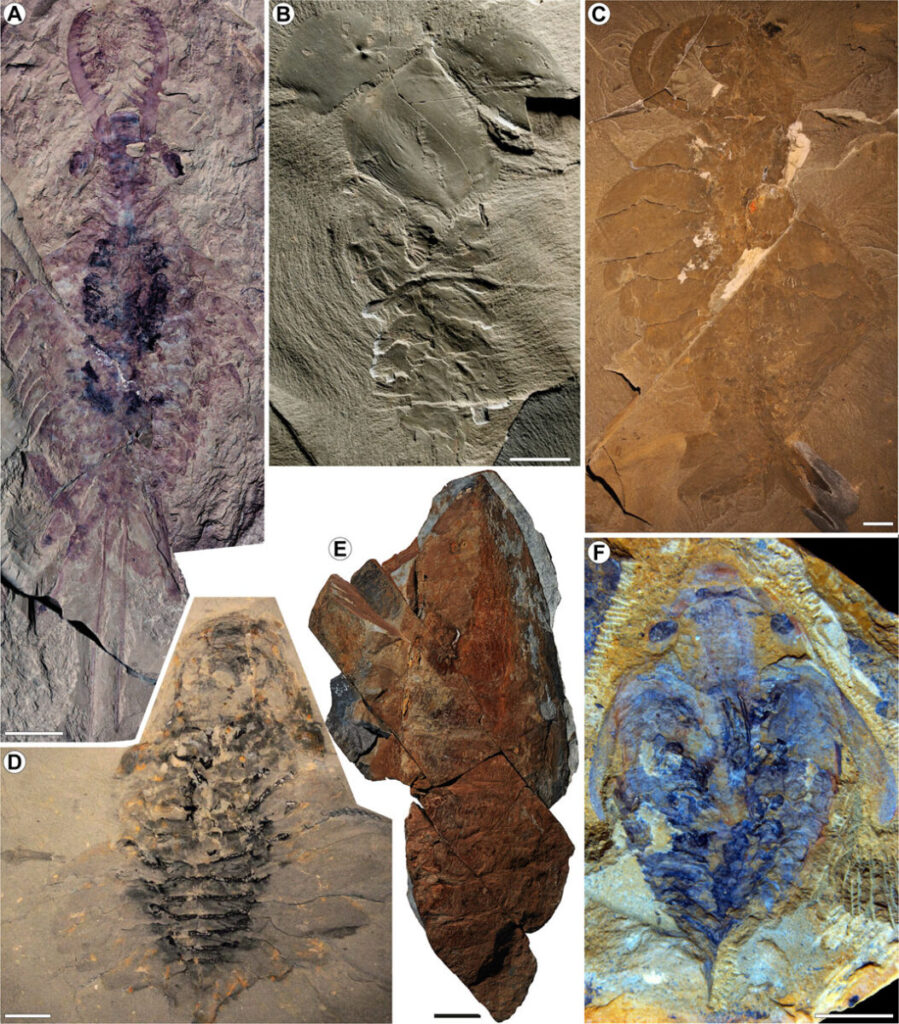ANOM Lab members published 4 articles on the Frontiers research topic “Insights on the Rise of Animal Life from Cambro-Ordovician Lagerstätten”. 3 articles report on fossil arthropods from the Fezouata Shale in Morocco. Potin et al. describe new suspension-feeding radiodonts from the Fezouata Shale (Fig. A), and discuss their ecological and evolutionary implications. Drage et al. document the moulting behavior of the Moroccan marrellid (Fig. B) and compare it to that of other marrellomorphs and modern arthropods. Laibl et al. also focus on marrellids, but this time characterizes the morphological changes occurring during their development based a nice set of juvenile and adult specimens including tiny immature stages (Fig. C). The fourth article, by Lustri et al., explores the environmental evolution of xiphosurids (Fig. D), and compare it to other euchelicerates groups.

Additional digital ressources:
A 3D model, based on µCT data, of one of the frontal appendage of the new taxon described by Potin et al. can be seen and manipulated online on Sketchfab.
A video presenting the three-dimensional rendering of the smallest immature stage of the Fezouata marrellid can be viewed here.


